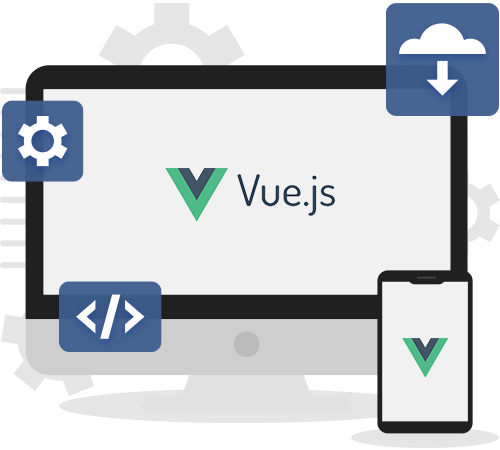Index Surge: Amplifying Your Insights
Stay updated with the latest trends and news across various industries.
Vue.js and Chill: Building User Interfaces Like a Pro
Unlock your UI design potential! Dive into Vue.js and learn expert tips to create stunning user interfaces effortlessly.
Understanding Vue.js: A Beginner's Guide to Building Dynamic User Interfaces
Understanding Vue.js is essential for anyone looking to create dynamic user interfaces with ease. Vue.js is a progressive JavaScript framework that allows developers to build interactive web applications. Its core library focuses on the view layer, providing a simple and flexible API that can be integrated into projects without any hassle. The framework's reactive data-binding system ensures that any changes in the data model automatically update the view, simplifying the development process and enhancing the user experience.
For beginners, getting started with Vue.js can be broken down into a few easy-to-follow steps:
- Installation: Start by including Vue via CDN or using package managers like NPM or Yarn.
- Creating Components: Organize your application by building reusable components that manage their own state and logic.
- Vue Directives: Utilize built-in directives like
v-bindandv-ifto add dynamic behavior to your UI.

Top 10 Tips for Mastering Vue.js Components and State Management
Mastering Vue.js components and state management is essential for building scalable and maintainable applications. Here are the top 10 tips to elevate your skills:
- Understand the Vue Instance: Grasp the concept of the Vue instance as it serves as the root of your application.
- Component Lifecycle Hooks: Familiarize yourself with lifecycle hooks such as
created,mounted, anddestroyedto manage the component's behavior effectively. - Use Props and Events: Leverage props for passing data to child components and events for communication back to parent components.
- Keep Components Small: Aim to create small, focused components that are easier to manage and debug.
- Computed Properties: Utilize computed properties to create dynamic data that automatically updates based on dependencies.
Additionally, mastering state management is key to an efficient Vue.js application. Here are more valuable tips:
- Use Vuex for State Management: Implement Vuex to handle state across components, enabling a centralized store for all your data.
- Understand Mutations and Actions: Learn the difference between mutations (synchronous changes) and actions (asynchronous operations) in Vuex for better state handling.
- Modular Structure: Organize your Vuex store into modules to maintain a clean and organized codebase.
- DevTools Integration: Take advantage of Vue DevTools for debugging and tracking state changes in real-time.
- Keep State Immutable: Always use immutable patterns when updating state to prevent unintended side effects.
How to Build Responsive User Interfaces with Vue.js: Best Practices and Techniques
Building responsive user interfaces with Vue.js requires a clear understanding of both the framework and the principles of responsive design. Start by leveraging Vue's built-in features such as reactivity and component-based architecture for creating flexible layouts. Use CSS frameworks like Bootstrap or Tailwind CSS to quickly implement a grid system that adapts to different screen sizes. Additionally, consider using media queries in your stylesheets to tweak your designs based on the user's device. Finally, always test your application on multiple devices to ensure that your UI is not only responsive but also maintains its usability and aesthetics across all platforms.
To further enhance your responsiveness in Vue.js, employ best practices like lazy loading and code splitting. This ensures that only the necessary resources are loaded as users navigate through your application, improving performance on mobile devices. Utilize Vue's transition effects to create smooth visual feedback during user interactions, thereby enhancing the user experience. Also, consider implementing dynamic components that can adjust based on user preferences or accessibility settings. By integrating these techniques, you can create a robust, responsive interface that provides a seamless experience for all users.